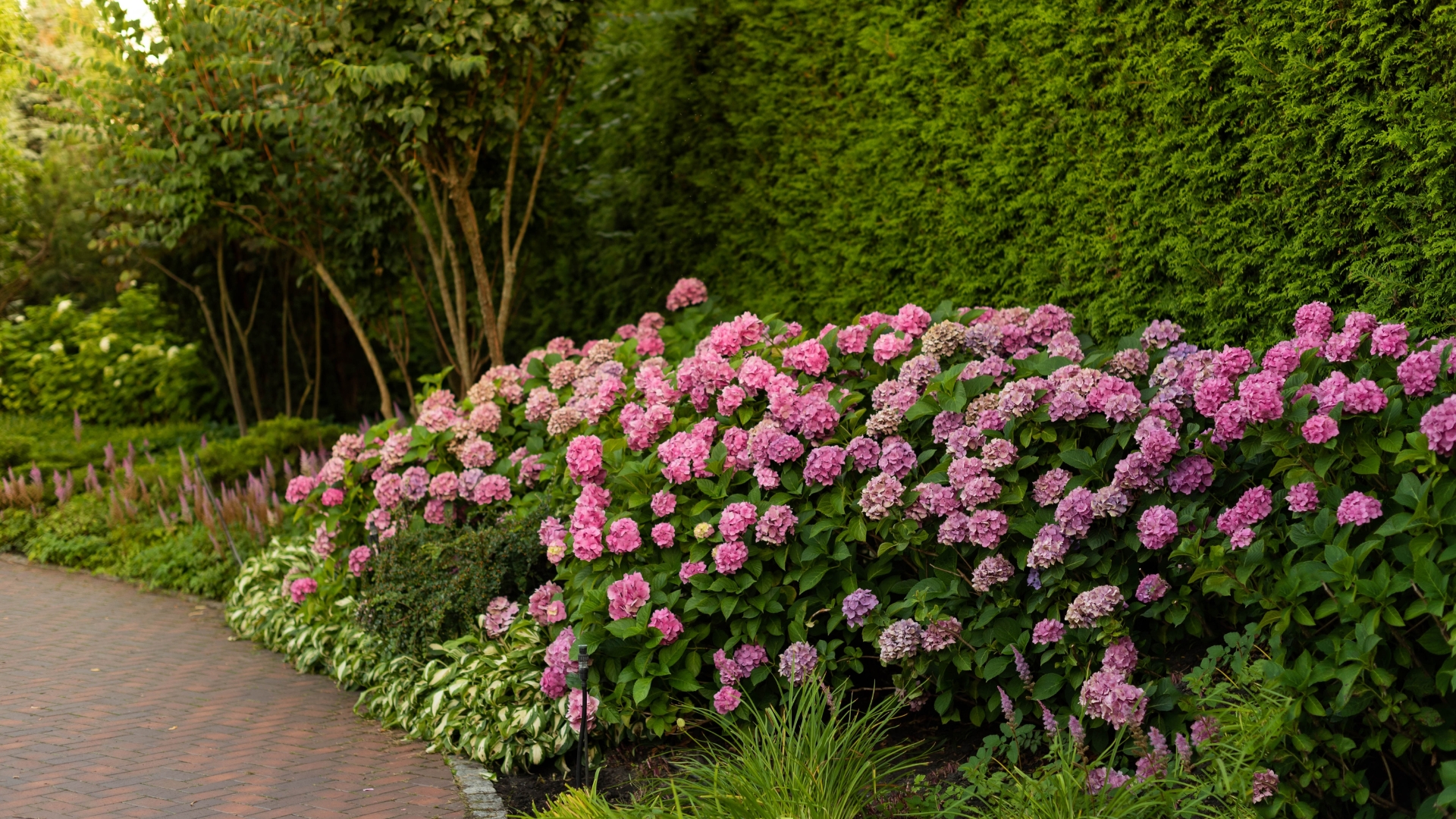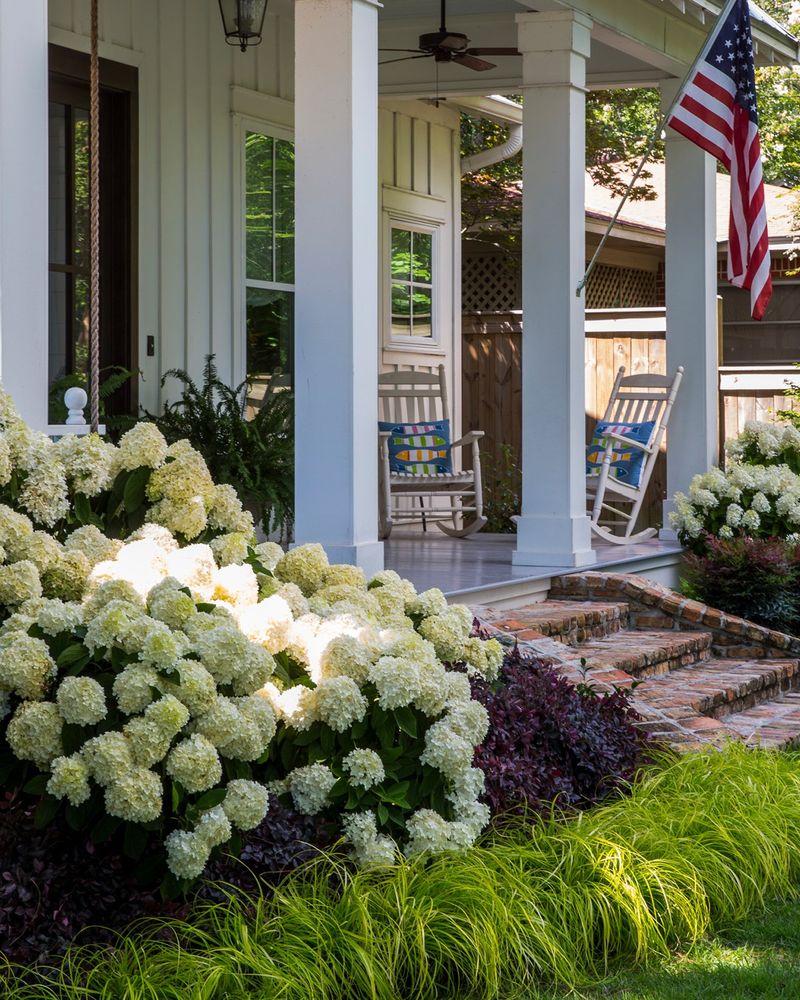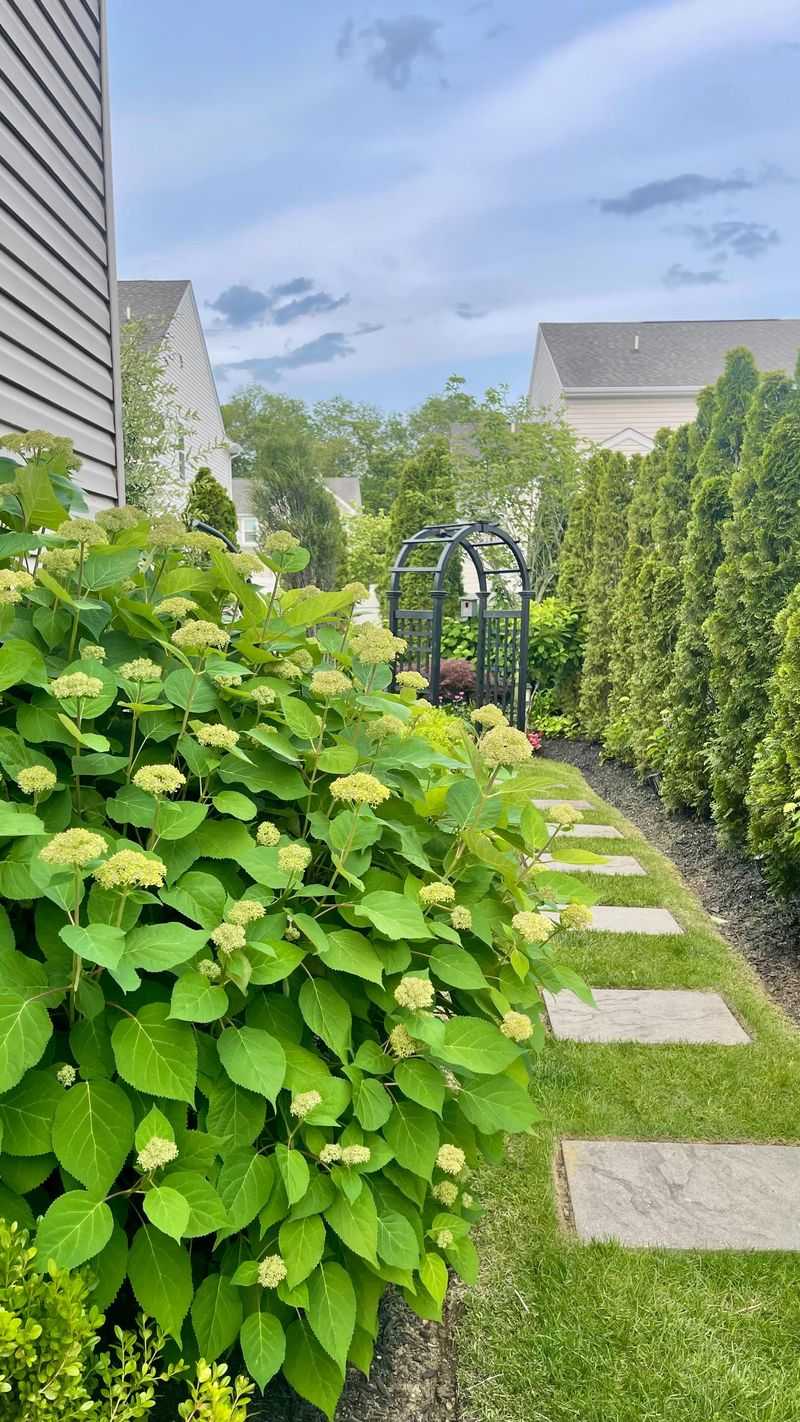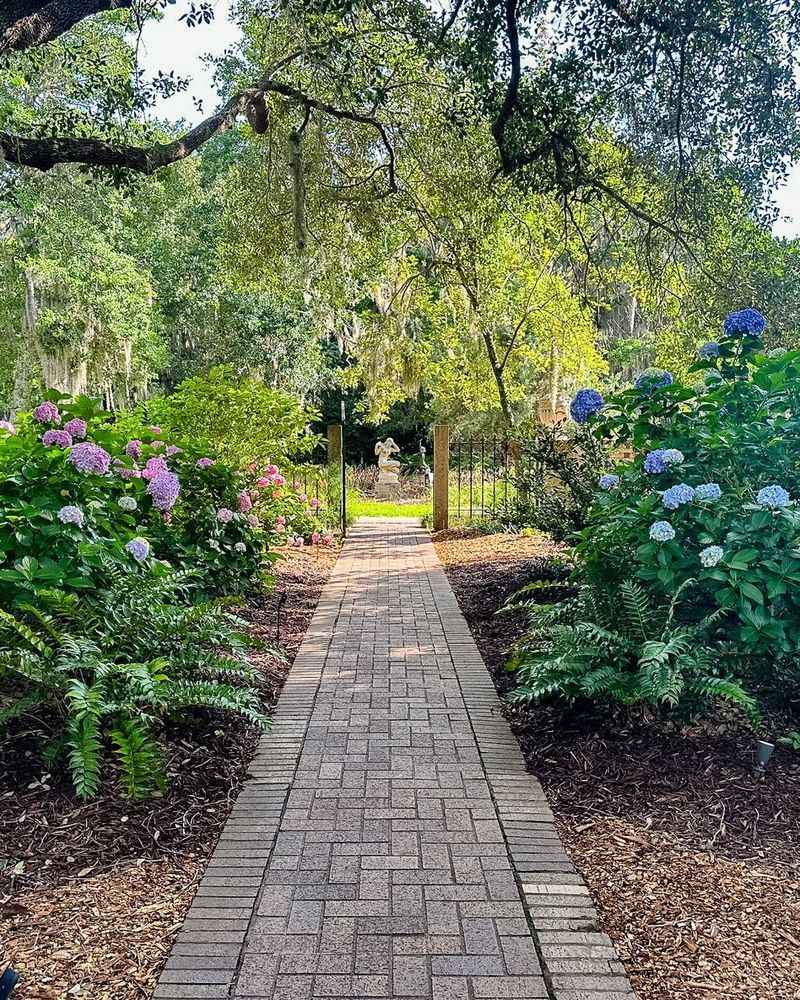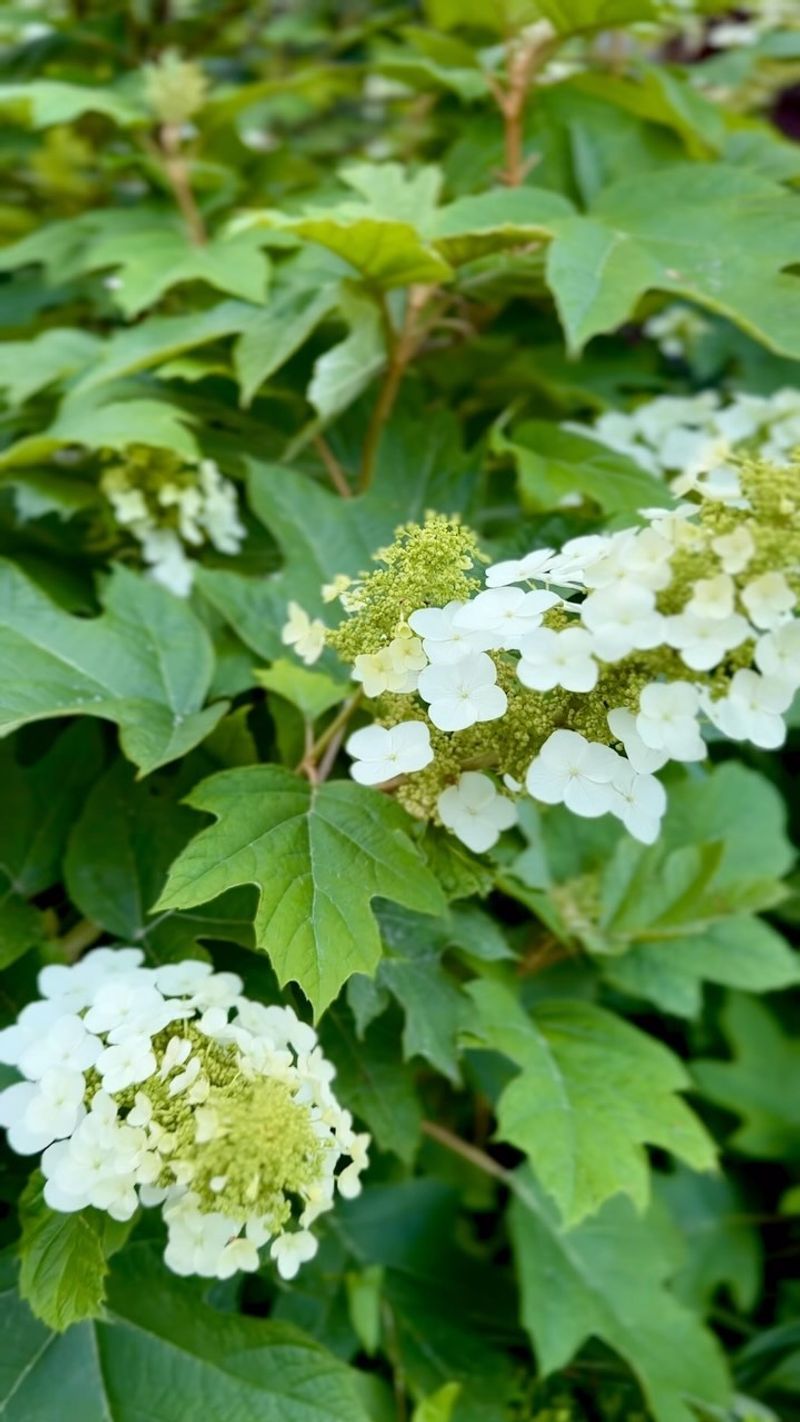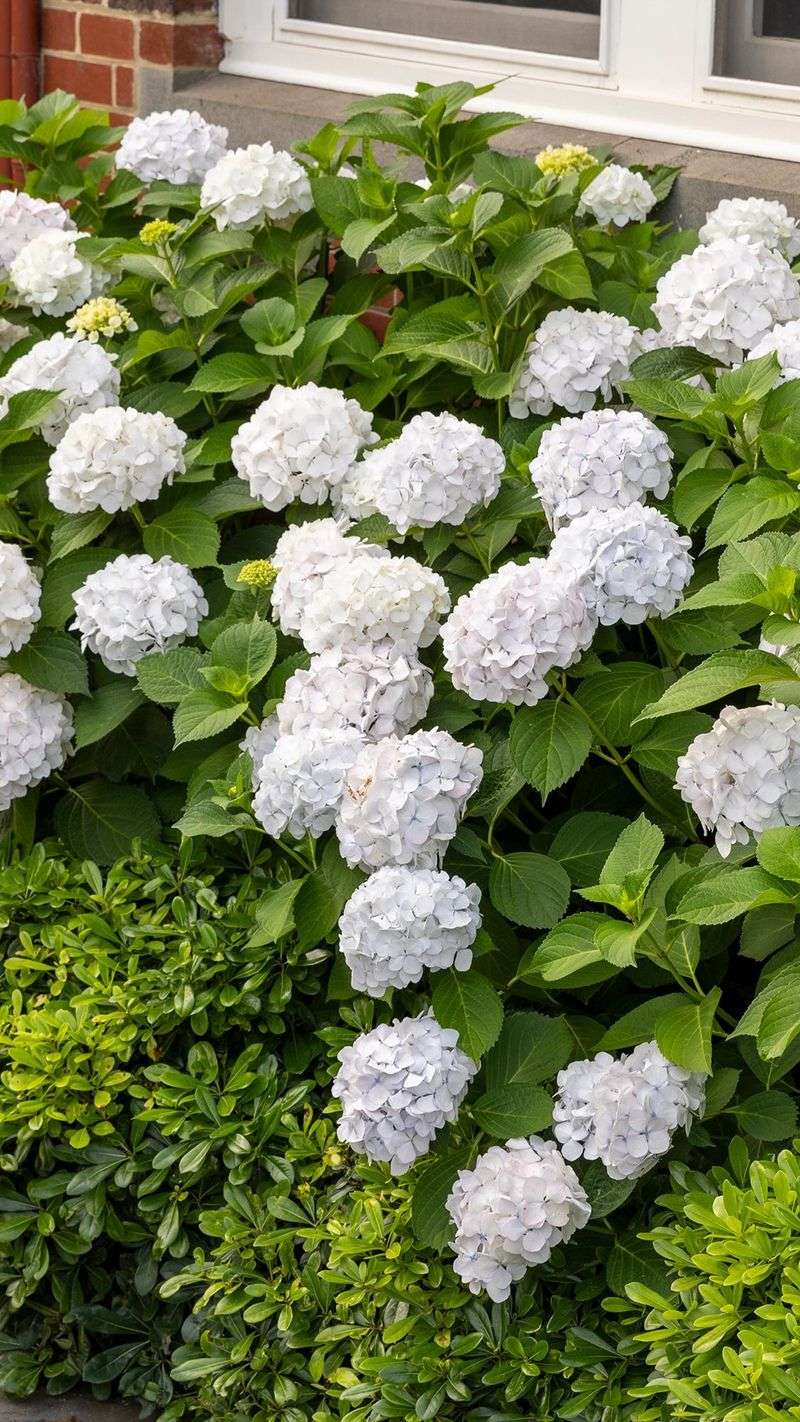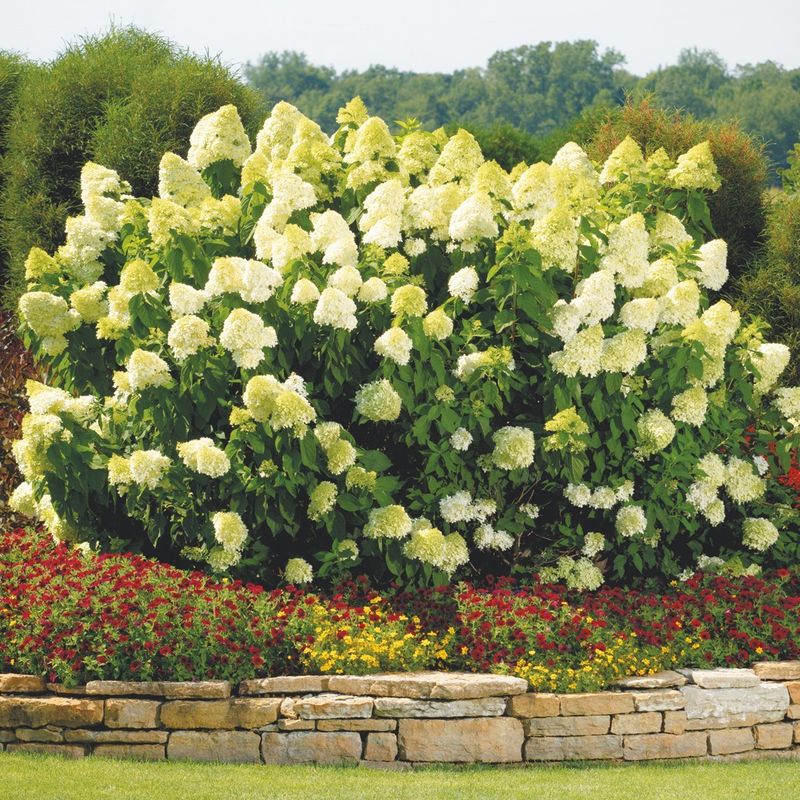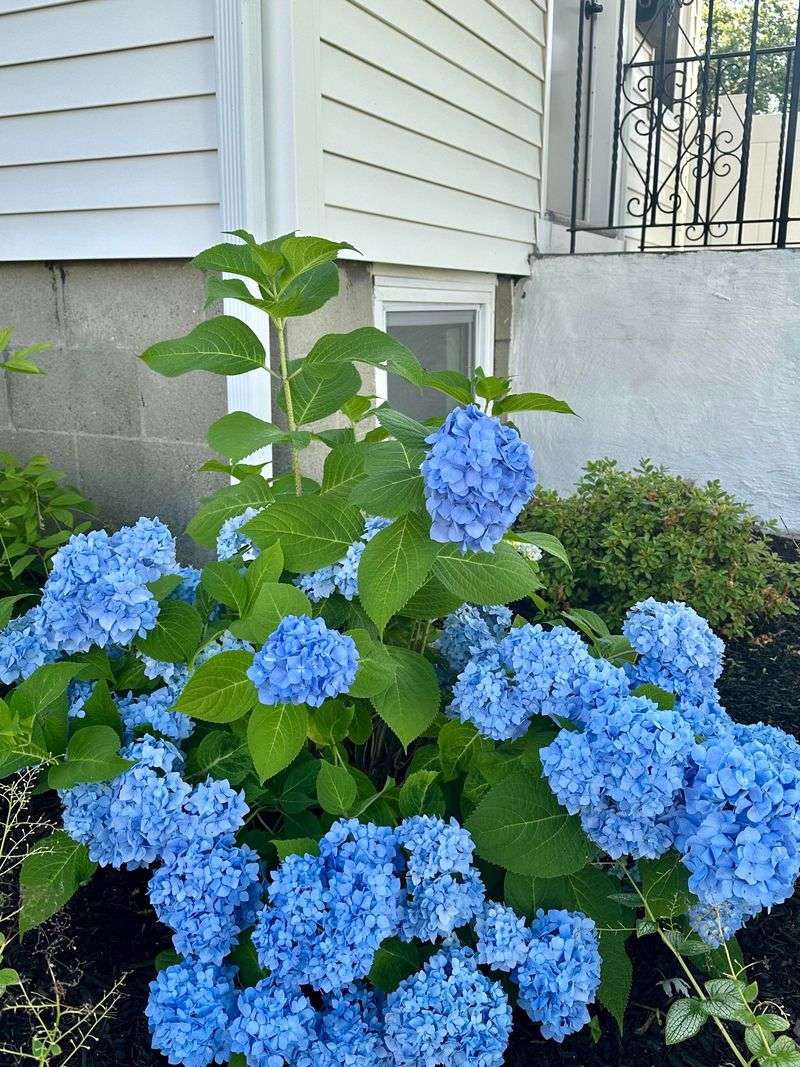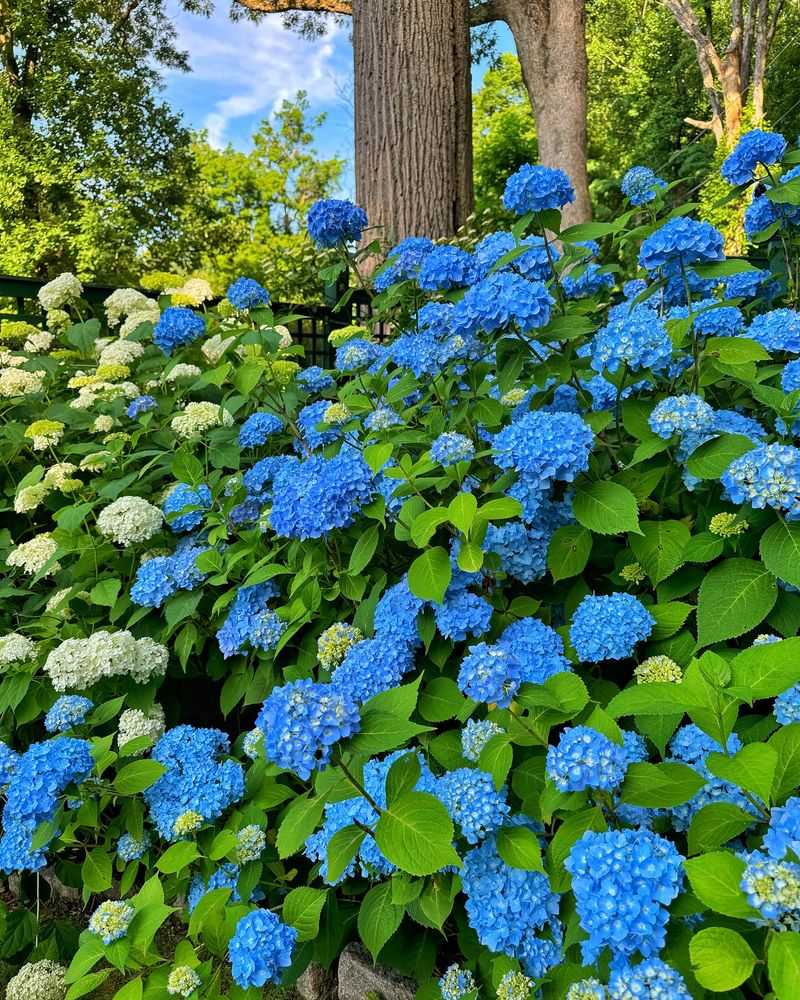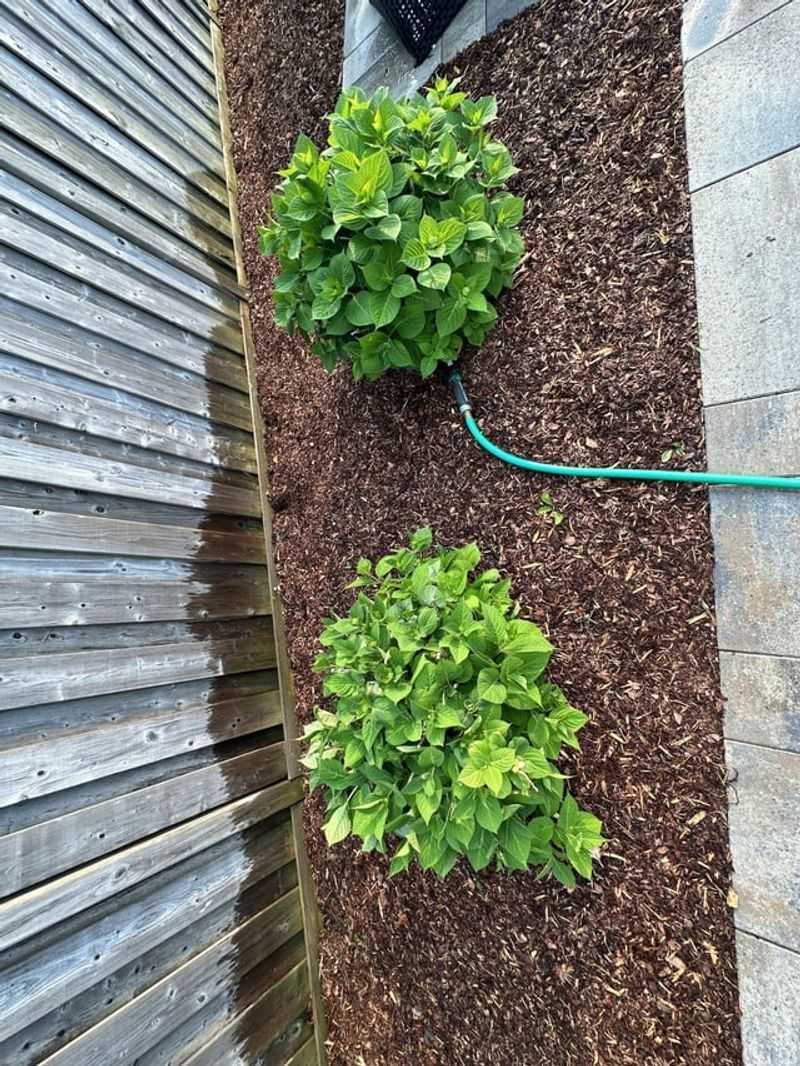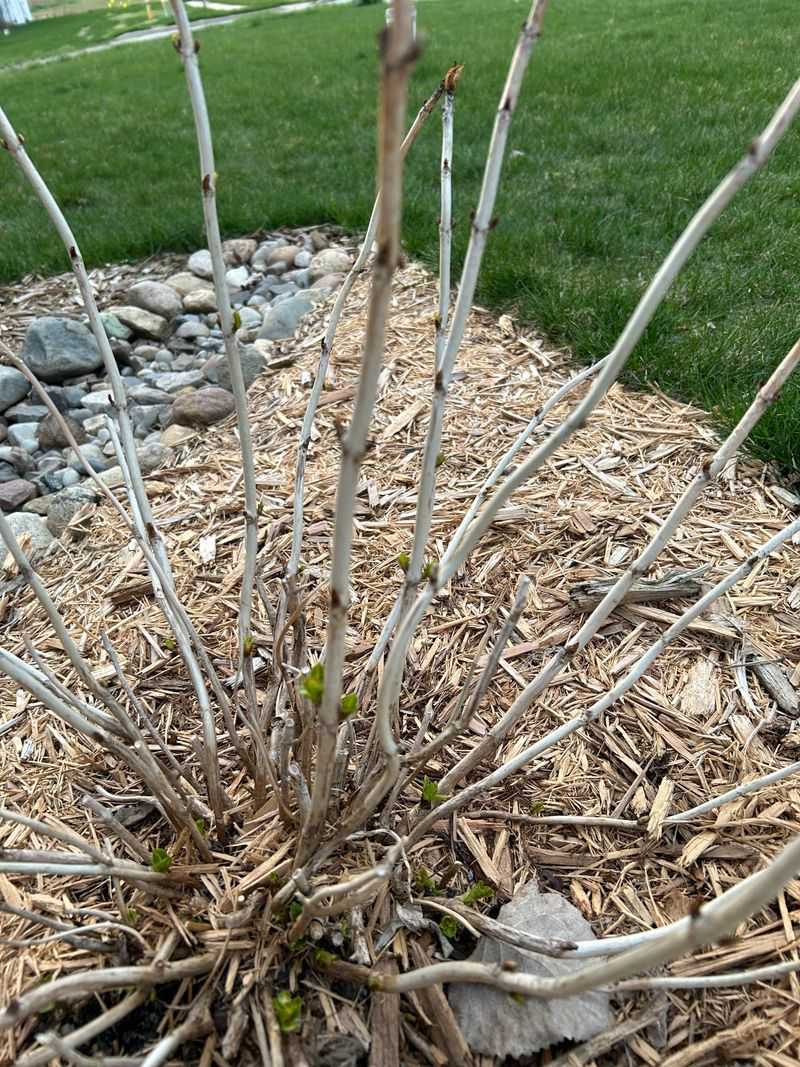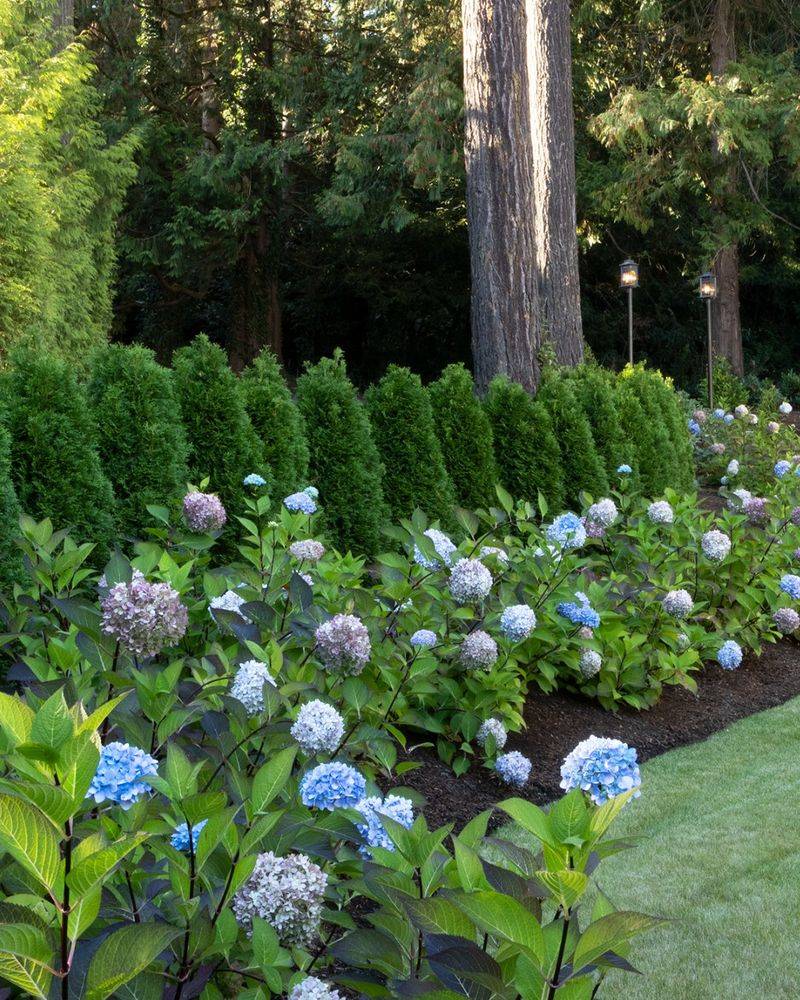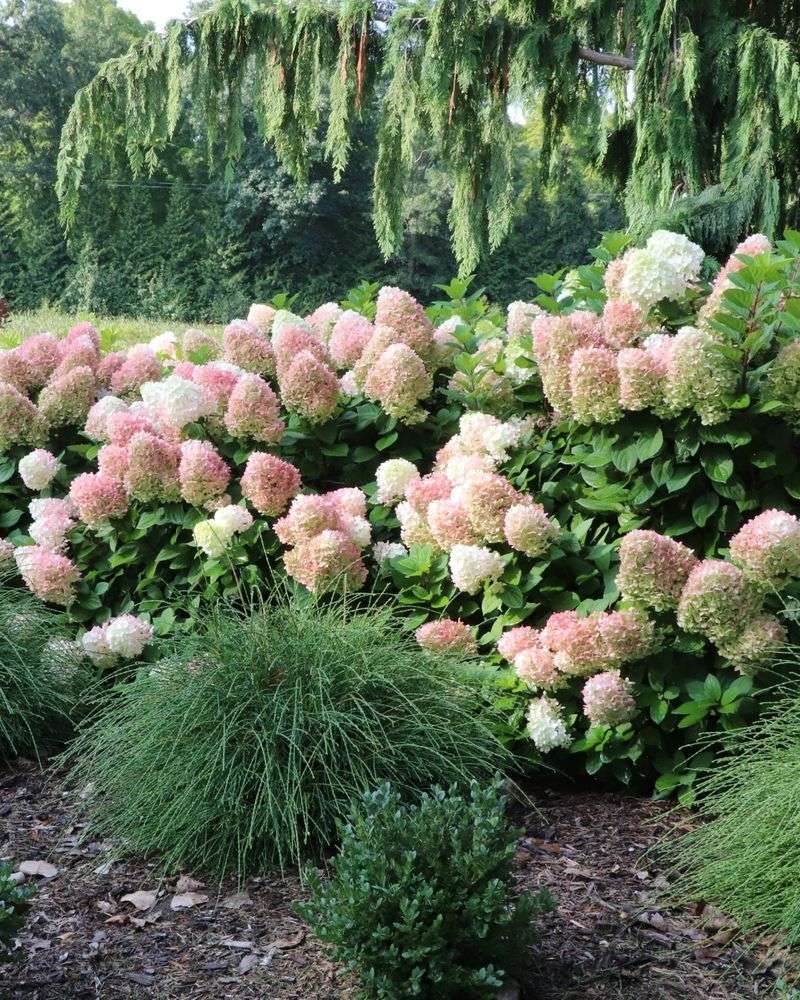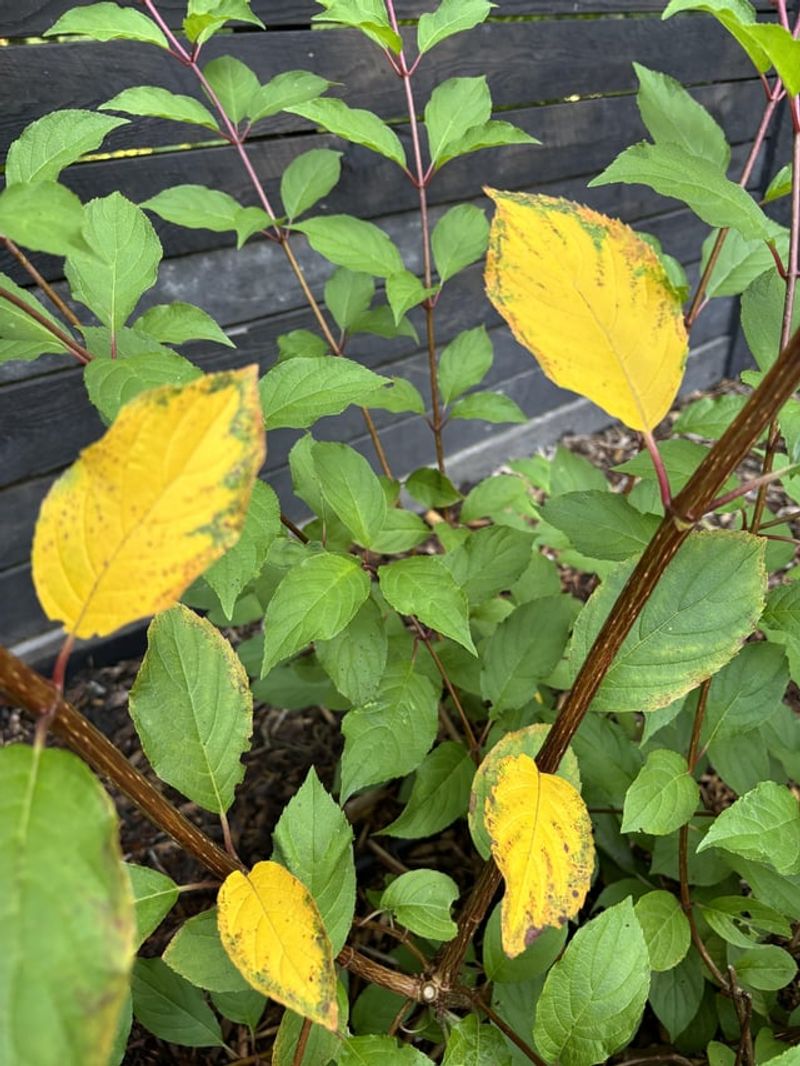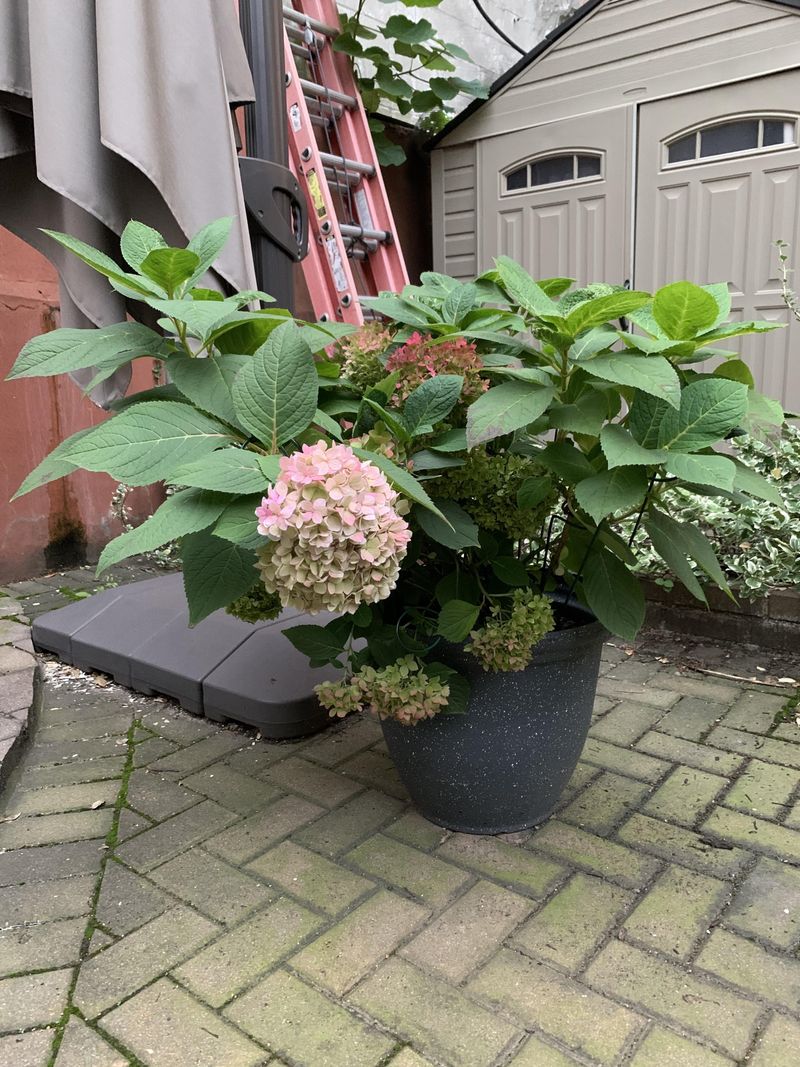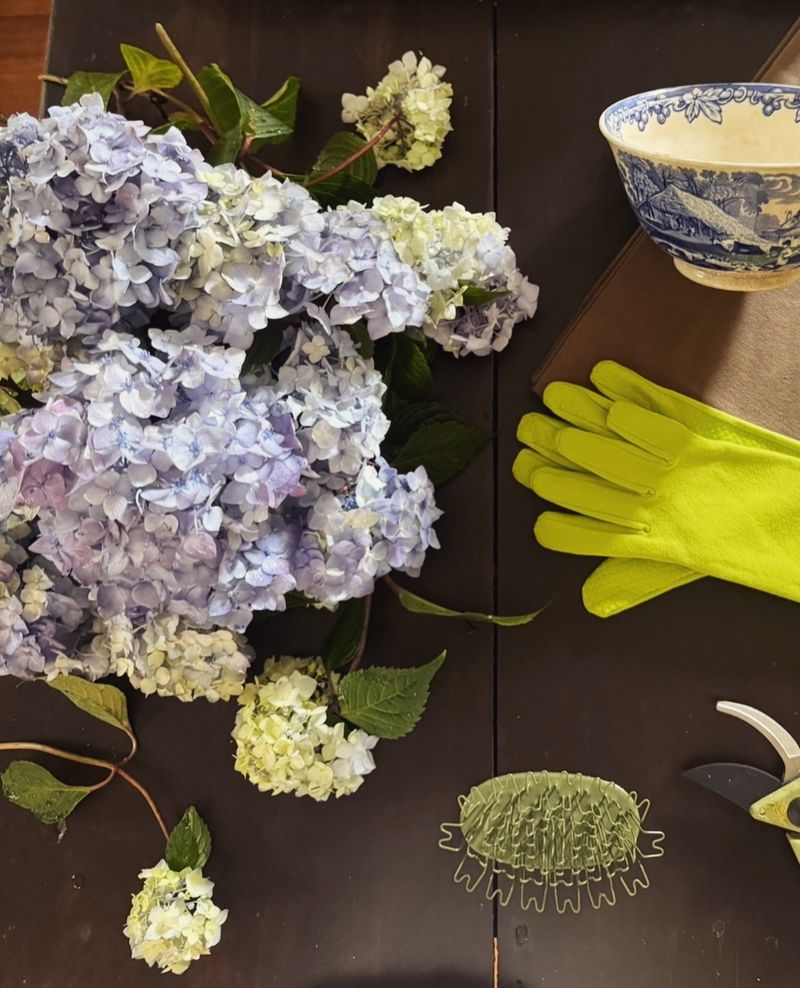Hydrangeas are like the cheerful friends of the garden, instantly brightening up your entryway with their big, beautiful blooms.
Placing them near your door not only adds charm but also gives visitors a warm, welcoming vibe. These flowers are surprisingly easy to care for, making them perfect even if you’re not a green thumb.
Plus, their colors can change with a little magic from your soil, keeping things fresh and fun all season long.
Let me share some handy tips to help your hydrangeas steal the spotlight every time!
1. Instant Curb Appeal
Nothing says “welcome home” quite like the massive, colorful blooms of hydrangeas framing your entrance. Their generous flowers create an immediate visual impact that can boost your property’s value and make a memorable first impression on visitors.
These eye-catching shrubs work in almost any style home, from cottage gardens to modern landscapes. The best part? Once established, hydrangeas deliver this wow factor year after year with minimal effort on your part.
2. Natural Privacy Screen
Feeling a bit exposed when opening your front door? Hydrangeas create the perfect natural barrier between your entryway and the street or sidewalk. Their dense, leafy growth provides subtle screening without the fortress-like feel of a fence or wall.
The substantial height (3-6 feet for most varieties) offers just enough separation while still appearing welcoming. Unlike privacy hedges that can look severe, hydrangeas soften the landscape with their rounded form and gorgeous blooms.
3. Seasonal Shade Solution
East or west-facing entryways often get blasted with intense morning or afternoon sun. Strategically planted hydrangeas can provide cooling shade during hot summer months, making your entrance more comfortable and potentially lowering cooling costs.
Their broad leaves create dappled light patterns that add visual interest to your entryway. As deciduous shrubs, they’ll drop leaves in winter when you actually want that extra sunlight and warmth reaching your door.
4. Four-Season Interest
Unlike one-hit-wonder plants, hydrangeas offer visual interest across multiple seasons. Spring brings fresh green growth, summer delivers spectacular blooms, fall introduces russet and burgundy leaf colors, and winter showcases architectural dried flower heads against the snow.
This year-round performance means your entryway always has something beautiful to greet you. Even in their dormant winter state, the dried blooms add texture and dimension to what might otherwise be a barren landscape.
5. Low-Maintenance Luxury
Entryways should make a statement without creating endless chores. Once established, hydrangeas require minimal care compared to fussier flowering plants or seasonal annuals you’d need to replant repeatedly.
A simple pruning once yearly, occasional fertilizing, and regular watering during dry spells is all they need. For busy homeowners, this combination of high impact and low maintenance makes hydrangeas the smart choice for creating an impressive entrance without weekend-consuming upkeep.
6. Choose the Right Variety
Not all hydrangeas are created equal for entryway planting. Compact varieties like ‘Little Lime’ or ‘Cityline Paris’ won’t block windows or pathways. For smaller spaces, consider dwarf varieties that max out at 3 feet tall.
Macrophylla types (mopheads) offer those classic blue or pink blooms, while panicle hydrangeas provide more sun tolerance and sturdy stems. Match the mature size and growth habit to your specific entryway dimensions for the best long-term results.
7. Master the Soil Secrets
The magic of hydrangeas lies partly in their color-changing abilities. For blue blooms, aim for acidic soil (pH 5.5 or lower) by adding sulfur or aluminum sulfate. For pink flowers, sweeten the soil with garden lime to reach pH 6.0 or higher.
Start with a soil test to know your baseline, then amend accordingly. Remember that white hydrangeas and most panicle varieties won’t change color regardless of soil pH – they’re beautiful but stubborn about staying true to their hue.
8. Perfect Your Planting Technique
Dig holes twice as wide as the root ball but equal in depth – hydrangeas hate being planted too deep. The top of the root ball should sit slightly above ground level to prevent crown rot in these moisture-loving plants.
Work compost into your planting hole, but avoid high-nitrogen fertilizers at planting time. Water thoroughly after planting, then apply 2-3 inches of mulch to retain moisture, keeping it a few inches away from the stems to prevent rot.
9. Watering Wisdom
Hydrangeas near entrances benefit from deep, infrequent watering rather than frequent shallow sprinkles. Aim for about 1 inch of water weekly, including rainfall. Their name literally means “water vessel” in Greek – they’re thirsty plants!
Consider installing a drip irrigation system for consistent moisture delivery right at the root zone. Morning watering is best, allowing foliage to dry before evening and reducing disease risk. During the first two years, extra watering helps establish strong root systems.
10. Strategic Pruning Secrets
Different hydrangea types require different pruning approaches. Macrophyllas (big-leaf types) bloom on old wood – prune immediately after flowering. Panicle and smooth hydrangeas bloom on new growth – prune in late winter before new growth starts.
Always remove dead or crossing branches first. For entryway plants, consider maintaining a slightly more manicured shape to keep pathways clear. Remove spent blooms throughout the season for a tidier appearance and potentially more flowers.
11. Feed for Fantastic Flowers
Hungry hydrangeas appreciate proper nutrition for their spectacular blooms. Apply a slow-release fertilizer formulated for flowering shrubs in early spring as new growth emerges. Avoid high-nitrogen fertilizers that promote leafy growth at the expense of flowers.
A second light feeding in early summer can boost late-season blooms. Stop fertilizing by August to allow plants to prepare for dormancy. For organic gardeners, compost tea makes an excellent supplement that won’t burn these sensitive roots.
12. Companion Planting Partners
Enhance your entryway design by pairing hydrangeas with complementary plants. Low-growing hostas create a finished look beneath hydrangeas while appreciating similar growing conditions. Ferns add delicate texture that contrasts beautifully with bold hydrangea blooms.
For seasonal interest, plant spring bulbs like daffodils or tulips that will finish blooming just as hydrangeas leaf out. Avoid aggressive plants that might compete for water and nutrients in this prime real estate near your door.
13. Problem-Solving Techniques
Even these resilient plants occasionally face challenges. Yellowing leaves often indicate chlorosis from alkaline soil – address with chelated iron and soil acidifiers. Brown leaf edges typically signal drought stress or excessive sun exposure.
Wilting despite moist soil could indicate root rot from poor drainage. Pest problems are relatively rare, but aphids or spider mites may appear during stress periods. A strong spray of water often solves minor pest issues without chemicals near your entryway.
14. Winter Protection Strategies
Entryway hydrangeas may need extra winter care in colder regions. For macrophylla types that bloom on old wood, protecting those flower buds is crucial. Create a cage of chicken wire around plants and fill with dry leaves for insulation.
Avoid covering with plastic, which traps moisture and causes more harm than good. In windy entrance areas, consider burlap screens to prevent winter burn. Fall mulching helps protect roots, but keep the mulch from direct contact with stems.
15. Cutting for Indoor Displays
Bring your entryway beauty indoors by properly harvesting hydrangea blooms. Cut in the morning when stems are fully hydrated, selecting flowers that are fully open but still fresh. Immediately place cut stems in warm water after removing lower leaves.
For longest vase life, recut stems underwater at an angle. Fresh flowers last about a week, while semi-dried blooms can last months. Bonus tip: let some late-season flowers dry naturally on the plant for winter arrangements that echo your entryway’s outdoor beauty.

